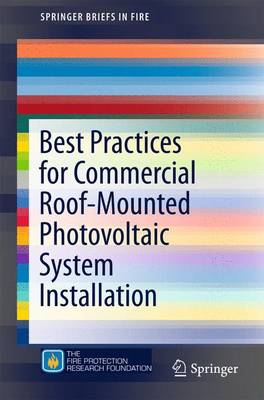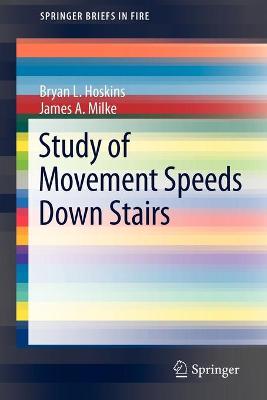SpringerBriefs in Fire
2 total works
Best Practices for Commercial Roof-Mounted Photovoltaic System Installation
by Rosalie Wills, James A. Milke, Sara Royle, and Kristin Steranka
Published 1 January 2015
This SpringerBrief presents information on a wide variety of hazards and the damage potential caused by installation of a photovoltaic (PV) system. The current installation practices for PV systems on roofs create electrical, fire, structural, and weather-related hazards that do not comply to current codes, standards and guidance documents....Read more
This SpringerBrief presents information on a wide variety of hazards and the damage potential caused by installation of a photovoltaic (PV) system. The current installation practices for PV systems on roofs create electrical, fire, structural, and weather-related hazards that do not comply to current codes, standards and guidance documents. Potential dangers include structural loading, wind loads, hail, snow, debris accumulation, seismic hazards, firefighting hazards, and electrical hazards. Despite the increased popularity of PV systems after the environmental movement, research shows that the costs of installing PV systems outweigh the benefits. Hazards of PV systems on roofs have caused several incidents in the United States; the most notable in Bakersfield, California, and Mount Holly, North Carolina. Designed for fire engineers and professionals, Best Practices for Commercial Roof-Mounted Photovoltaic System Installation offers recommendations to set up PV systems safely and sustainably.
The Study of Movement Speeds Down Stairs closely examines forty-three unique case studies on movement patterns down stairwells. These studies include observations made during evacuation drills, others made during normal usage, interviews with people after fire evacuations, recommendations made from compiled studies, and detailed results from laboratory studies. The...Read more
The Study of Movement Speeds Down Stairs closely examines forty-three unique case studies on movement patterns down stairwells. These studies include observations made during evacuation drills, others made during normal usage, interviews with people after fire evacuations, recommendations made from compiled studies, and detailed results from laboratory studies. The methodology used in each study for calculating density and movement speed, when known, are also presented, and this book identifies an additional seventeen variables linked to altering movement speeds.
The Study of Movement Speeds Down Stairs is intended for researchers as a reference guide for evaluating pedestrian evacuation dynamics down stairwells. Practitioners working in a related field may also find this book invaluable.
The Study of Movement Speeds Down Stairs is intended for researchers as a reference guide for evaluating pedestrian evacuation dynamics down stairwells. Practitioners working in a related field may also find this book invaluable.

